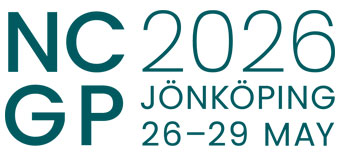Sustainable exhibitors
We strive to create a sustainable future together with our exhibitors. On this page you will find tips and guidelines for making environmentally friendly choices in connection with your participation in the fair. Together we can reduce our climate impact and create a more sustainable meeting place.
Plan your stand with sustainability in focus
A well-designed stand not only creates a strong presence, but also reduces environmental impact. Here are some simple steps for a more sustainable stand:
- Flexible design: Create a stand that can be used at multiple events with modular solutions.
- Digital communication: Replace printed materials with digital alternatives such as QR codes and screens.
- Minimize waste: Avoid excess packaging and choose suppliers with circular solutions.
- Energy-efficient lighting: Use LED lights and turn off equipment that is not being used.
- Choose sustainable materials: Use recyclable and reusable materials such as wood, metal or textiles.
- Smart transportation: Coordinate transportation and choose climate-smart alternatives whenever possible.
By making conscious choices in stand planning, you not only strengthen your brand, but also contribute to a more sustainable future.
Booth catering
Food and beverage account for a significant portion of the conference’s carbon footprint. As an exhibitor, you can make a big difference by choosing climate-smart and plant-based options for your booth catering.
Here are some simple tips for more sustainable catering:
Choose climate-smart food: Focus on dishes with a low carbon footprint and prioritize options that are better for the environment.
- Organic and locally produced: Choose organic, locally produced and fair trade products where possible.
- Adjust the quantity: Plan purchases based on the expected number of visitors to avoid food waste.
- Avoid disposable items: Use reusable or compostable plates and cutlery.
By making conscious choices about food and beverage, you can contribute to a more sustainable and responsible conference experience – regardless of which facility you are at.
Strengthen your brand with sustainable giveaways
The choice of giveaways has a bigger impact than you might think. By choosing sustainable alternatives, you can both reduce unnecessary waste and strengthen your brand as a responsible actor.
Here are some simple tips for more sustainable giveaways:
- Choose reusable products: Invest in water bottles, coffee mugs or cloth bags that can be used over and over again.
- Avoid disposable items: Minimize giveaways that are quickly thrown away or not used.
- Think about material choices: Choose products made from recycled, organic or environmentally friendly materials.
- Offer something meaningful: Consider whether a digital giveaway or a donation to a sustainability organization could be an option.
Travel to the conference with the climate in focus
As an exhibitor, you have the opportunity to make conscious choices that reduce your carbon footprint with your travel to and from the conference. Transportation often accounts for a large part of the conference’s emissions, but with a little planning you can make a big difference.
Here are some simple tips for a more climate-smart trip:
- Choose sustainable transportation options: Prioritize trains, buses or other public transportation when possible.
- Coordinate transportation: Carpool with colleagues or coordinate deliveries to reduce the number of transportations.
- Pack smart: Reduce the amount of freight by packing efficiently and avoiding excess material.
- Carbon offset your trip: If possible, carbon offset your travel and transportation.
- Plan well in advance: Early booking provides more options for sustainable transportation.
Accessibility – A conference for everyone
As an exhibitor, you have a responsibility to create a stand that is welcoming and accessible to all visitors. Whether it’s stand design, presentations or meetings, everyone should have the opportunity to participate on equal terms.
Here are some important aspects to consider:
- Physical accessibility: Ensure that the stand has enough space for visitors with different mobility abilities to easily navigate.
- Clear communication: Use easy-to-read signage that is clear to all visitors.
- Height and location: Ensure that information desks and important materials are located at a level that is accessible to everyone.






